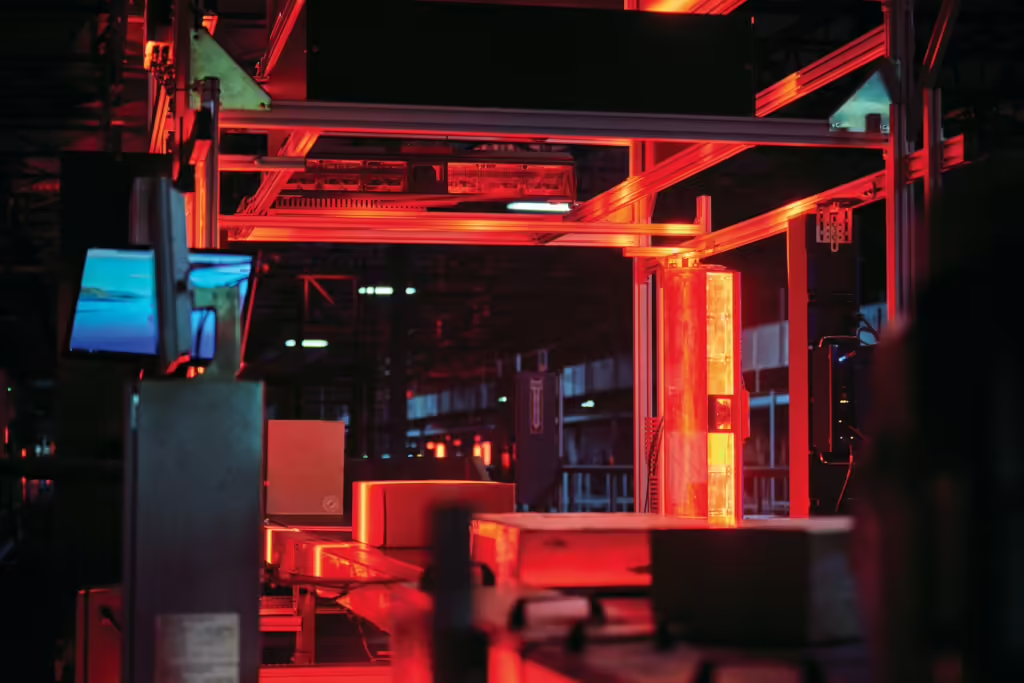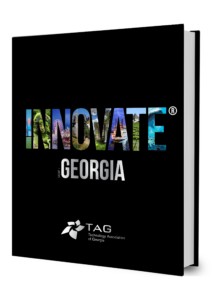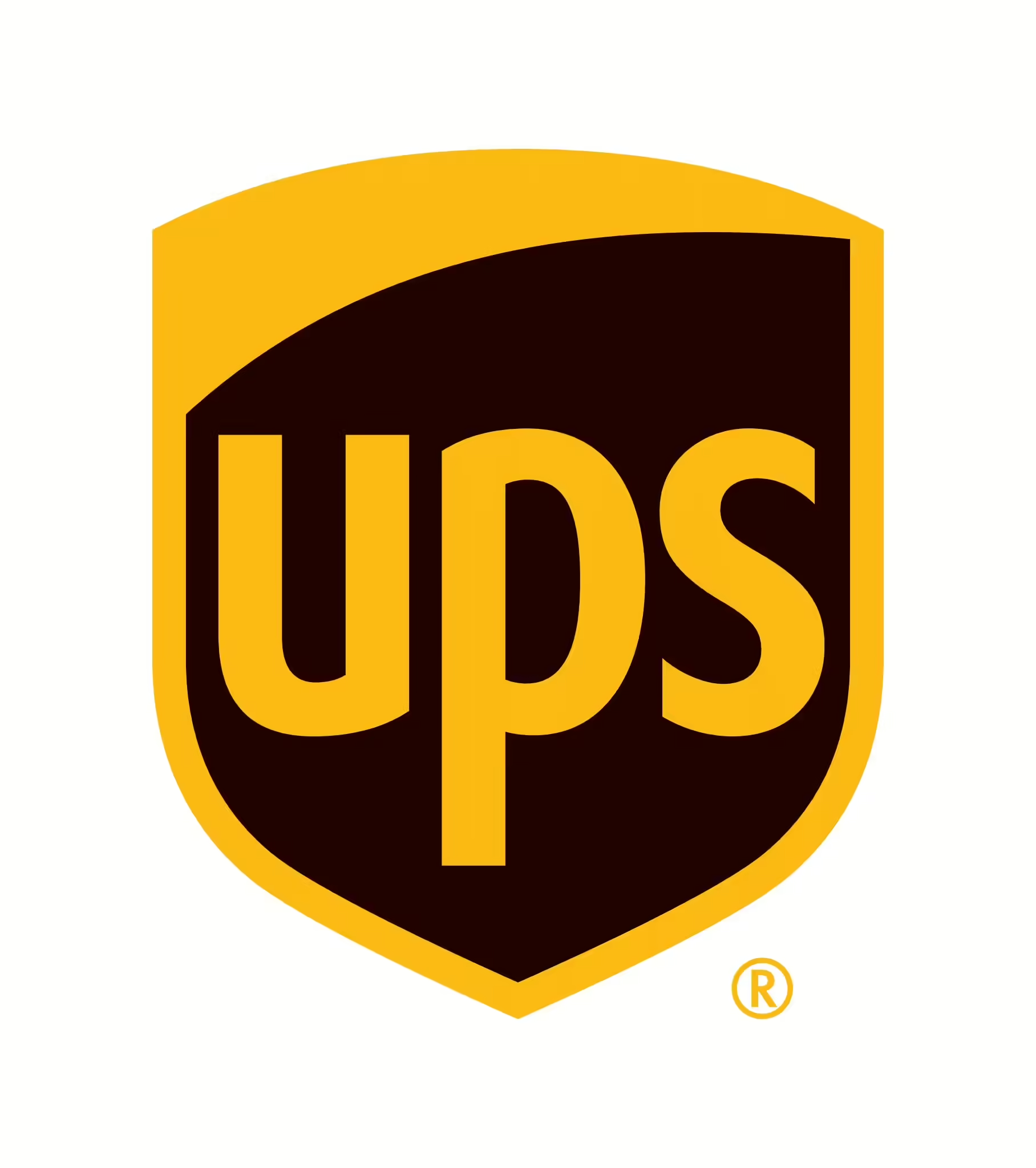AT UPS, THE COMMITMENT TO INNOVATION AND FORWARD-THINKING STRATEGIES IS NOT JUST A VISION – IT’S A REALITY UNFOLDING EACH DAY.

Based in Atlanta, Georgia, the logistics giant is at the forefront of technological advancements, continuously redefining industry standards. From the Network of the Future to implementing Smart Package Smart Facility (SPSF), UPS is deploying cutting-edge technologies like digital twins, data analytics, and generative AI to enhance efficiency, sustainability, and customer satisfaction.
NETWORK OF THE FUTURE: THE VISION
UPS is not just imagining the future; it is actively building it. The company is developing a logistics network that revolutionizes how packages move from point A to point B and every step in between. This transformation begins by making every package smarter, an essential step for making shipments faster, greener, and more productive.
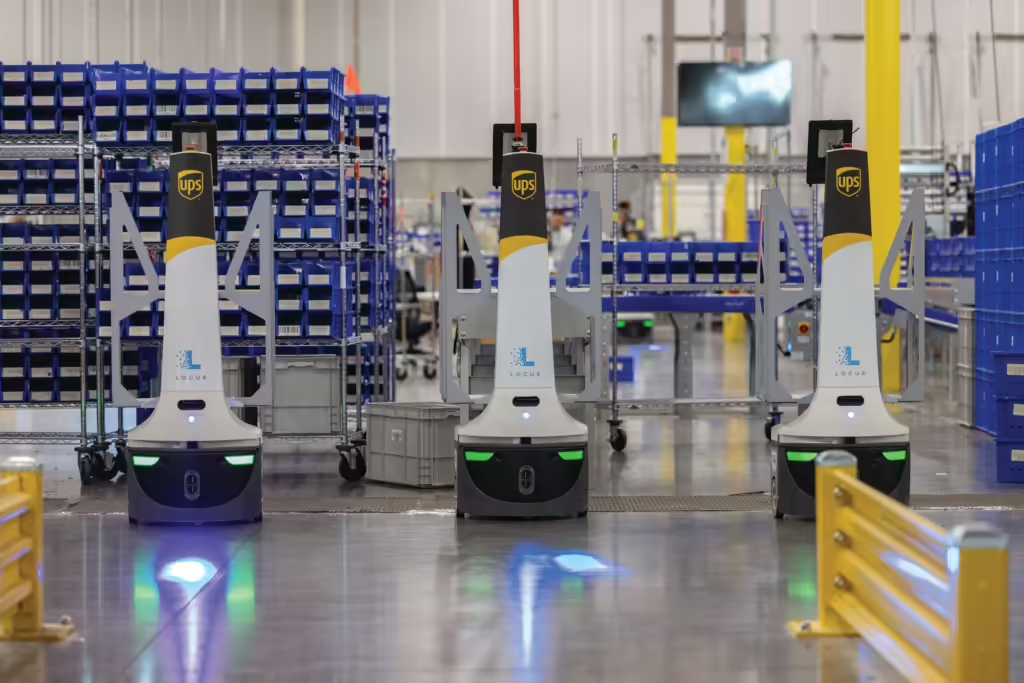
President of Operations Technology at UPS, Ted Abebe, emphasizes, “The Network of the Future is about deploying tomorrow’s technology today to benefit the customer.” This vision encompasses several key layers, each vital in transforming logistics. In fact, UPS leaders have said it’s as big of a revolution as transitioning from paper to PC, launching their airline, or shipping internationally for the first time.
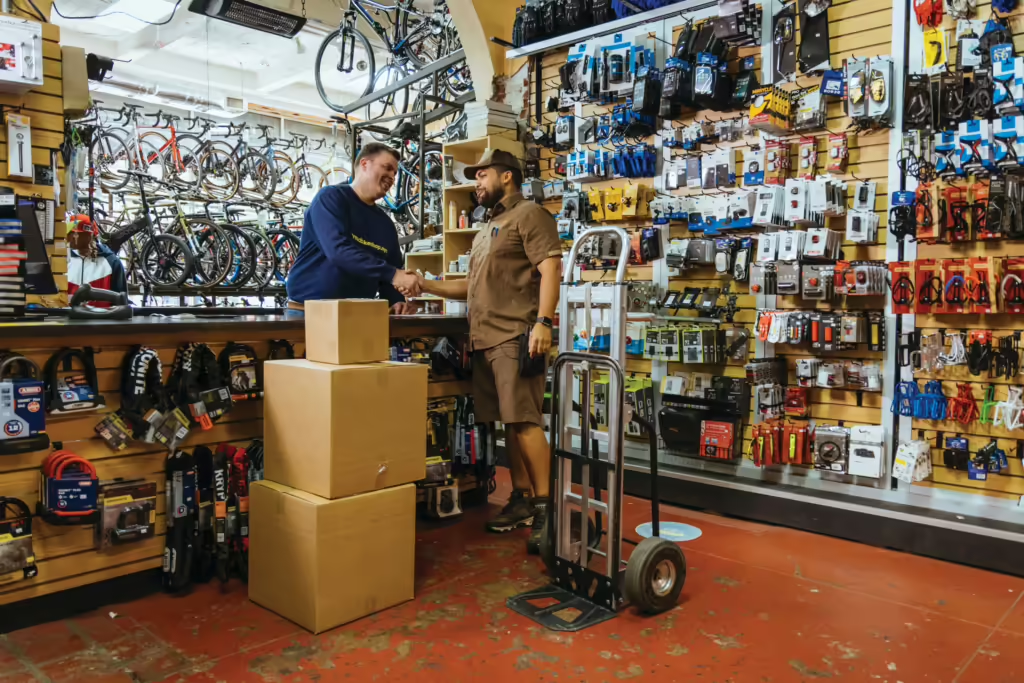
By utilizing next-generation sensing technologies, UPS is enhancing the intelligence of its packages and facilities through SPSF. This innovation starts with RFID (Radio Frequency Identification) labels. With these labels, packages become “smart packages,” giving them “brains.”
Here’s how it works: First, shipping labels are printed with embedded RFID tags. At pickup, an RFID reader in the UPS vehicle automatically senses the smart packages. From the very beginning, RFID technology has provided enhanced visibility and accurate delivery of information in real-time. As packages enter a UPS Smart Facility, RFID labels are detected by next-generation sensors, ensuring continuous tracking information with pinpoint accuracy.
Jon Gurney Bell, head of Strategic Innovation at UPS, describes this technology as creating “package precision within our network,” which elevates the customer experience by offering unparalleled visibility. “We’re moving from a scanning-based network to a sensing-based network,” he explains. “With RFID, it’s always listening, always talking. We can locate a package within three feet anywhere in our network.”
Implementing SPSF leads to fewer misplaced packages, making deliveries more efficient and sustainable. By reducing the number of misplaced packages and optimizing delivery routes, UPS is cutting down on unnecessary transportation, aligning with its commitment to environmental responsibility. Jon asserts: “The greenest mile is the one never driven.”
This smart technology significantly improves the customer experience by offering near-pinpoint package location at every step. It makes shipments faster by fixing bottlenecks before they occur and greener by quickly locating the right package at the right time and address. This increased productivity means fewer calls, emails, texts, and claims for customers.

DIGITAL TWIN: THE BRAIN BEHIND THE BRAWN
Another layer to UPS’ Network of the Future is using digital twins—essentially, digital representations of the company’s end-to-end network. These digital twins simulate various scenarios within the logistics network, providing real-time solutions and predictive analytics. This groundbreaking innovation enhances scanning and sensing with RFID smart labels, providing greater visibility and fewer sorting errors.
By viewing the entire network as a system, UPS creates digital twins to simulate various “what-if” scenarios in their operations. These digital representations encompass entire facilities, transportation lanes, individual package flows, sorting processes, and more.
Digital twins integrate seamlessly with SPSF, creating a robust system that combines physical and digital assets. By placing sensors on every package and facility, UPS gathers vast amounts of data, which are then analyzed using AI and generative AI models. This approach allows for predictive maintenance, optimized routing, and real-time problem-solving.
Dr. Youngjun Choi, Director of Advanced AI and Robotics at UPS, highlights the significance of this technology: “With enough data, everything becomes predictable. The digital part of our Network of the Future is the brains behind the brawn.” This predictive capability ensures that UPS maintains high reliability and resilience, crucial for meeting customer expectations and service-level agreements (SLAs). UPS’ shipping capabilities must be adaptable and flexible, meeting customers’ delivery demands precisely when and where they want. These innovations enable UPS to design real-time solutions for customers, improving service efficiency.
DATA: THE NEW CURRENCY
In the digital age, data is a critical asset. UPS has long recognized the value of data, collecting and analyzing vast quantities to drive decision-making and innovation.
Dr. Choi elaborates: “We have 87 petabytes of data that we use daily to operate our network. The key to marketplace success is swiftly transforming this data into capital, currency, or customer value. Especially with the advent of generative AI, the convergence of the physical and digital has made data increasingly relevant.”
The ability to build large language models and utilize both AI and generative AI enhances the network, making it smarter, richer, and, most importantly, predictable. Dr. Choi says, “With enough data, everything becomes predictable.” For UPS, predictability is crucial for network resilience. A predictable network ensures reliability and meets customer expectations and SLAs.
Generative AI is poised to revolutionize logistics again, and UPS is at the forefront of this transformation. This technology enables the creation of highly accurate models and simulations, facilitating advanced problem-solving and innovation. “Generative AI is real, and it’s happening,” Dr. Choi asserts.
At UPS, generative AI is integrated into the broader digital ecosystem, enhancing the capabilities of both SPSF and digital twins. This convergence allows UPS to predict and respond to scenarios with unprecedented accuracy. This overarching data story underscores the strategic importance of data in driving innovation and maintaining UPS’s leadership in the logistics industry.
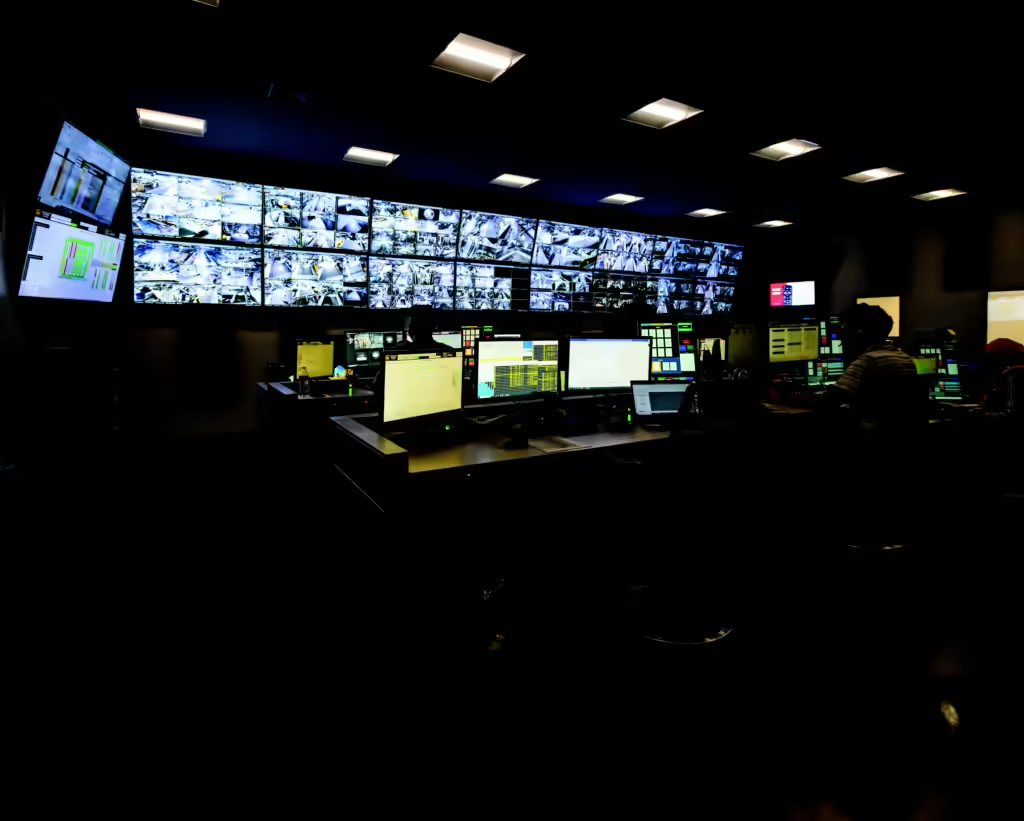
LEADING THE WAY IN INNOVATION
UPS’ commitment to innovation is evident in its adoption and implementation of cutting-edge technologies. This relentless pursuit of excellence enhances operational efficiency and elevates the customer experience, ensuring that UPS remains a leader in the industry.
This forward-thinking approach ensures that UPS is prepared for tomorrow’s challenges and sets the standard for the entire logistics industry. With a focus on innovation, sustainability, and customer satisfaction, UPS is creating the Network of the Future—today.
